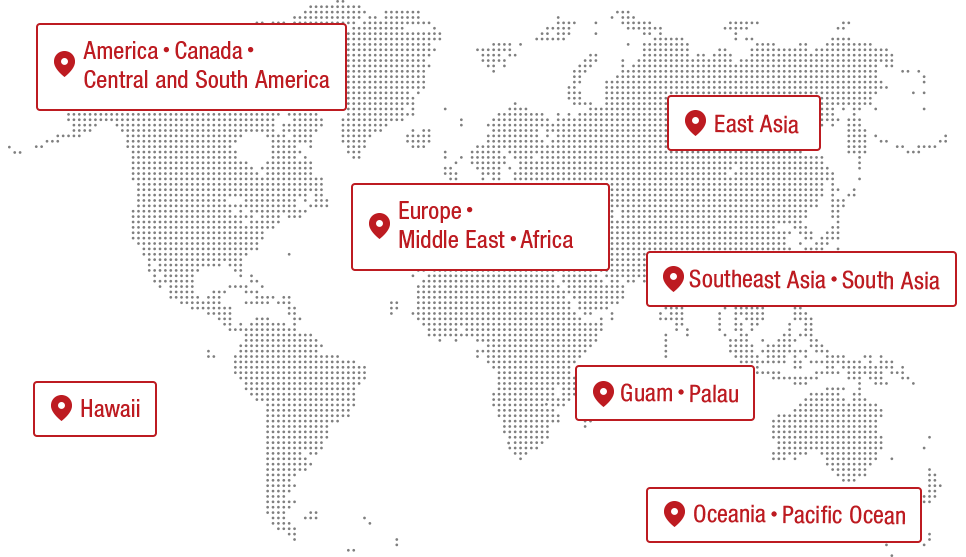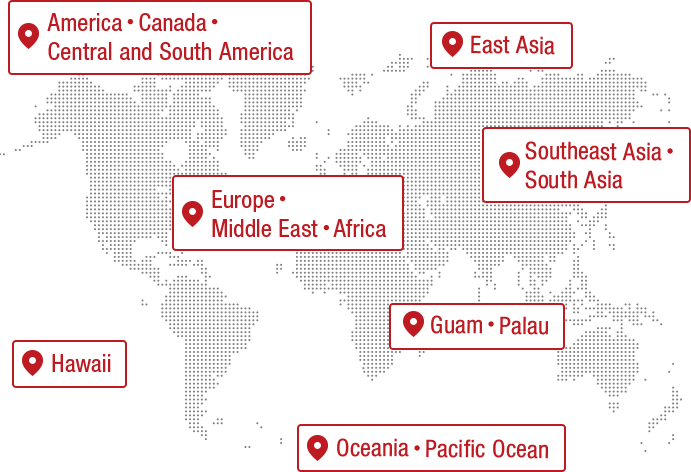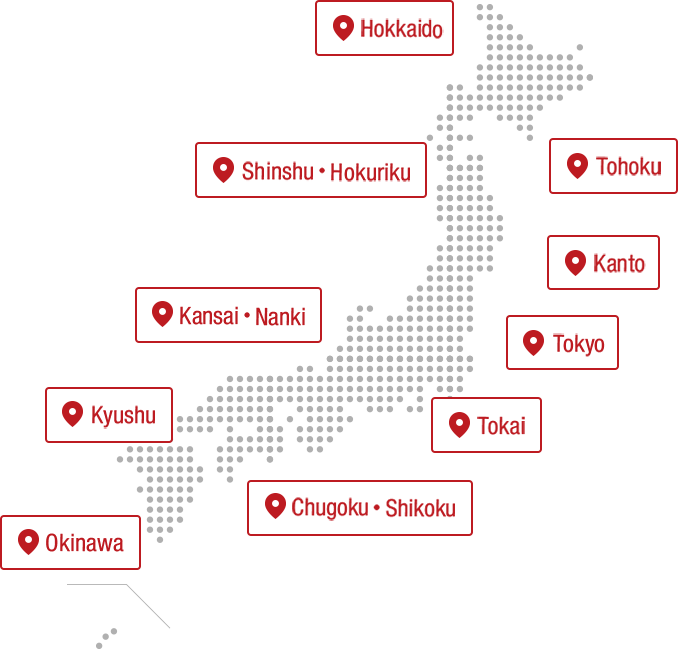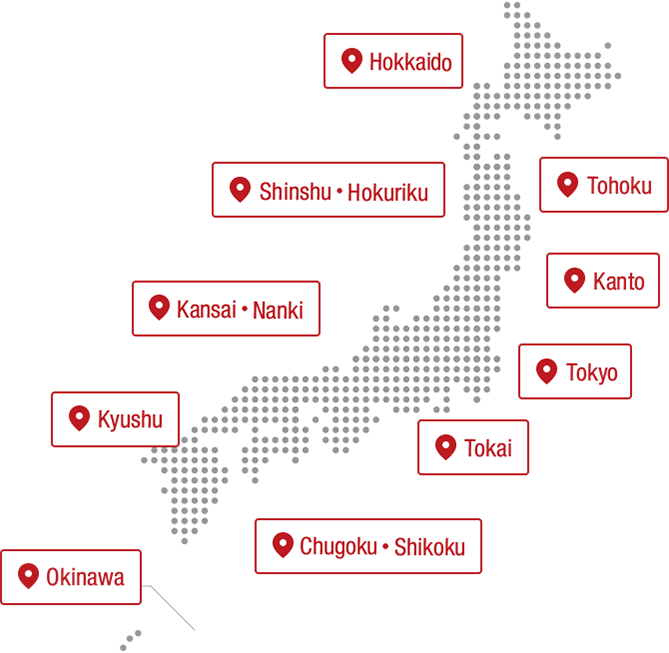INDEX
- Menu planning begins a year in advance, based on the season of the ingredients.
- Tasting session to check taste, hygiene, and operations from each perspective
- The flight attendants act as anchors to serve meals in the best possible condition
- Creating a realistic manual that conveys the taste of the food and the personality of the chef
- In-flight meals made through teamwork that only JAL can offer
Menu planning begins a year in advance, based on the season of the ingredients.
"I'm in charge of planning the in-flight meals for international flights, and compared to other airlines, JAL puts a lot of effort into its in-flight meals. The recent trend is for first-class in-flight meals to be more of an à la carte style, where customers can choose from a variety of options. However, JAL is unique in that it puts a strong emphasis on course services, so that customers can enjoy the full appeal of both Japanese and Western cuisine." (Keita Fukuda, Cabin Service Group Manager, Development Department, Product and Service Planning Division)

Keita Fukuda, Manager, Guest Room Service Group, Development Department, Product and Service Planning Division
The menu changes four times a year, every three months, and actively incorporates seasonal ingredients, as is typical of Japan, a country with four seasons.
"Because of this, we usually create our menus almost a year in advance, because that's when seasonal ingredients are most readily available," says Fukuda.
When creating a first-class menu, a "menu proposal meeting" is first held at the chef's own restaurant, where the chef presents the menu he has devised to relevant parties. The recipe is then handed over to the catering company in charge of preparing the in-flight meals, and a tasting session is held at a later date to check whether it has been accurately reproduced. Once any issues that arise at that time have been resolved, a second tasting session is held, and then a final check is made about a month before the menu is actually served. This is the basic flow.
This time, JAL Royal Catering (JRC) held the first tasting session after the menu proposal meeting. The menu was created by Chef Hideki Ishikawa of "Kagurazaka Ishikawa" and Chef Koizumi Kosuke of "Koshiro".

Chef Hideki Ishikawa of Kagurazaka Ishikawa (left) and Chef Koizumi Kosuke of Toshiro (right)
"Ishikawa and Torashiro are sister restaurants, but each restaurant's individuality is reflected in their cuisine. If Ishikawa serves traditional Japanese cuisine that makes the most of the ingredients, Torashiro is a restaurant that actively incorporates rare ingredients. I think the result is a luxurious course that allows you to enjoy the ingenuity of this combination." (Fukuda)
The menu to be sampled is the first-class Japanese menu that will be available from June to August 2020. As this period coincides with the Tokyo Olympics, we asked them to put more effort into creating a more luxurious menu than usual.
Tasting session to check taste, hygiene, and operations from each perspective
The members who will be participating in the tasting event are Chefs Ishikawa and Koizumi, and the JRC chefs who will be recreating the menus they supervised. From JAL, they are the Development Department, which oversees the planning of in-flight meals, the In-Flight Meal Operations Office, which meticulously manages the hygiene of ingredients, tableware use, and costs, and the Cabin Quality Planning Department, which creates manuals for the work that occurs on board and communicates them to cabin attendants.

"The points that should be checked at a tasting event differ depending on the department. As the development department, we have a strong desire to faithfully recreate the ideas of the supervising chef, but due to the special environment of an aircraft, this can sometimes be difficult. Our role in the development department is to listen to the requests of each department and make adjustments one by one." (Fukuda)

Five types of appetizers
First, five appetizers were served. After checking the presentation and tasting the dishes, Ishikawa asked the JRC chef, "Is the amount of ginger according to the recipe?" Anything that can be corrected on the spot is immediately remade in the kitchen attached to the conference room, and the taste is checked again.

Chef Yoshiaki Nishiura, in charge of first class cooking at JRC, looks on nervously as Ishikawa tastes the food.

Meanwhile, in the in-flight meal operations room, I was intrigued by a dish of beef shabu-shabu and water shield served with aromatic jelly. The beef shabu-shabu was almost rare, so I wanted to confirm how it was sterilized and how the water shield, an ingredient that is prone to bacterial growth, was sanitized.
The flight attendants act as anchors to serve meals in the best possible condition
The Cabin Quality Planning Department will carry out checks while imagining the work that cabin attendants do in the cabin.
"We in the Cabin Quality Planning Department act as a bridge to connect the in-flight meals that have been perfected through trial and error to the flight attendants who actually serve them to customers. First-class meals generally involve several cooking processes on board. For steaks, we ask the customer how they would like them cooked and cook them accordingly. For fragrant ingredients like yuzu, we take measures such as shaving it on board just before serving. The dish created by the chef is finally completed by beautifully plating each dish throughout the course. However, as I am a flight attendant myself, I know all too well that if the workload increases, it becomes difficult to relax and provide lively service. How can we recreate the wonderful dishes that we have been supervised to serve to customers with a smile and confidence? I always take part in meetings with this in mind." (Yamane Kawai, Lead Cabin Attendant, Planning and Operations Group, Cabin Quality Planning Department, Cabin Headquarters)

Cabin Quality Planning Department, Cabin Headquarters, Planning and Operation Group, Lead Cabin Attendant, Yamane Kawai
Now, one thing that had been bothering me since the menu proposal meeting was the appetizer dish of conger eel on vinegared rice.
"When the menu was proposed at the menu proposal meeting, the conger eel was piping hot and the vinegared rice was only slightly warm. However, heating the vinegared rice and the conger eel at different times is not easy on an airplane. First of all, there is a limit to the number of ovens, and we are also heating other small dishes and cooking Western food at the same time. When I consulted with Ishikawa on the spot, he said, 'Hot vinegared rice is delicious, so I think it would be fine to heat it the same way as the conger eel. Let's try that first.' This exchange led to today's confirmation meeting, and I was relieved to find that the warm vinegared rice was also very delicious." (Yamane)

Creating a realistic manual that conveys the taste of the food and the personality of the chef

The Cabin Quality Planning Department creates a manual for the flight attendants who serve the meals, which includes detailed ideas for conveying the sense of realism of a tasting event.
"We will create a manual with photos and illustrations so that flight attendants can study the cooking and plating process in advance. We will also include a message from the chef, talking about the ingredients, secret ingredients, and suggestions on how to serve the food, incorporating specific details learned at the confirmation meeting." (Yamane)
Furthermore, a video was also created to complement the manual. Not only does it explain the presentation image in the video, but it also includes comments from the chef for each session and footage of the restaurant during menu proposal meetings, making it a very elaborate video.
"Of course, some chefs talk about the menu, others give updates on their progress, and some even perform magic tricks (laughs). You might think that's irrelevant, but I think it's very important. Both Ishikawa and Koshiro are restaurants that are difficult to get to even if you want to, because you have to wait for a reservation, and I think some customers will become interested in the restaurant after eating there. If the flight attendants can get a sense of the chefs' personalities and their passion for the food through the video, they will be able to give a more heartfelt introduction to customers." (Yamane)

In-flight meals made through teamwork that only JAL can offer
The tasting session then continues with soup, sashimi, simmered dishes, etc., checking each time for any adjustments that need to be made in terms of taste or quantity.

Winter melon and mozuku seaweed bowl

Steamed abalone, spiny lobster, sea urchin, red snapper with caviar and other sashimi

Clockwise from the top left: Kamo eggplant and hairy crab stewed with ginger sauce, pickles, miso soup with raw seaweed and green onions, and rice with fresh lotus root

Mango ice cream topped with rum jelly, coconut mochi (left), and brown sugar yokan (right)
Although this was only the first tasting session, the overall level of reproduction was quite high, and the relaxed atmosphere conveyed the satisfaction of the two chefs.


"At JAL, we want to work with chefs who can work as a team to create menus. There are many delicious restaurants and skilled chefs, but creating in-flight meal menus is not done by one person, so flexibility in considering the special environment of the cabin is a very important element. That's why we work with chefs who we've met in person, tasted their food, and fallen in love with as people. Thanks to them, I'm sure we'll have a great menu again this time." (Fukuda)
"When I travel privately, I also use other airlines to study, and I feel that the standard of in-flight meals is improving worldwide. I am proud to say that JAL's in-flight meals are among the best in the world. Also, befitting the name Japan Airlines, we incorporate an abundance of seasonal ingredients that allow you to experience the unique Japanese seasons. That's why it is meaningful to check the menu exactly one year before the customer boards, when the best seasons are in season, and I feel that this is an extremely important meeting. I would like to see customers choose JAL for its in-flight meals." (Yamane)

In this way, many staff members are involved in preparing first class in-flight meals, and they take a lot of time to complete them. One of JAL's goals is to provide meals of such quality that they make customers ask, "Is there a chef on board today?" With the aim of becoming the ultimate restaurant in the sky, we will continue to collaborate with various chefs and work as a team to create a wide variety of menus.
We'll take you behind the scenes of JAL's work, including inside stories on the introduction of the A350 and the development of in-flight meal menus.
The contents published are accurate at the time of publication and are subject to change.













